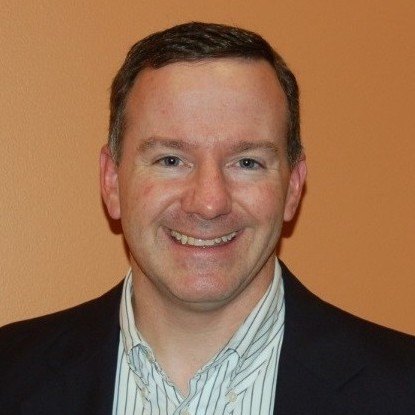For all organizations, innovation is critical for improving performance and strengthening competitive positioning against traditional and non-traditional competitors. All companies know this, but research continues to reveal that many innovation initiatives at large companies are still not scaling due to slow decision-making, conflicting departmental priorities, risk-averse cultures, and silo-based information.
For Human Resources (HR) functions, these organizational challenges create an opportunity to shine. HR practitioners can play a major role in enabling the innovation agenda by fostering greater organizational agility in people management, starting with improved alignment of business objectives and workforce resources.
Unfortunately, for many HR practitioners, obtaining a holistic view of the information needed to support business-driven innovation initiatives is a major hurdle, resulting in sub-optimal analysis, insights, and decisions. The main underlying issue is fragmented data sitting in silos inside and outside the organization, and challenges faced by IT in efficiently unifying that data.
In this post, we will discuss challenges HR practitioners face in speeding the flow of innovation, why better data integration is foundational as an enabler, and how a US intelligence agency is using the MarkLogic Data Hub to align talent to missions to ensure the best outcomes.
Organizational structure and agility are critical to business success in executing transformation initiatives and optimizing costs.”
Gartner, Top 5 Priorities for HR Leaders in 2020
Innovation requires organizational agility
When undertaking innovation initiatives, organizations that adhere to agile practices are nearly twice as likely to beat performance expectations, according to McKinsey. The most innovative enterprises exhibit the highest levels of agility across the entire business, overcoming inflexible organizational structures. For the management of human resources, organizational agility means the ability to not only efficiently add and redeploy people in response to opportunities, such as developing a new product or service, but also threats, like reorganizing to deal more effectively with enemy combatants.
At MarkLogic World 2019, four-star General Stanley McChrystal presented an instructive example of organizational agility during his keynote. General McChrystal, former commander of U.S. and international forces in Afghanistan and the former leader of Joint Special Operations Command (JSOC), recognized that the bureaucratic decision-making apparatus of his Task Force operating in Iraq were no match for the flexible network used by Al Qaeda.
General McChrystal adapted by creating a “Team of Teams”, which meant transforming the Task Force from a pyramid hierarchy into an agile network, where his organization operated as a constellation of teams that came together around specific goals required to defeat the enemy.
Organizing for innovation
Many larger companies and governmental organizations form task forces to tackle new business challenges in a start-up environment. These smaller innovation units are more agile and can shorten the timeframe between idea and results. However, staffing these teams can be a major challenge for people managers.
When tasked with forming innovation units, HR practitioners must be able to match the right people to the right assignments, and work within existing organizational constraints such as employee accessibility. To do this effectively, HR must access current information about employees’ skills, capabilities, location, performance, availability, and interests combined with details about job opportunities.
The use of these fluid organizational models will continue to increase and accelerate, requiring IT to deliver reliable (accurate and timely) data for faster HR insights and decisions. If you need proof, just look at how healthcare companies and manufacturers are rapidly adapting to deal with emergency demands associated with the COVID-19 pandemic.
Optimizing HR data architecture with a data hub for greater agility
Greater organizational agility starts with a reliable view of your workforce, including full-time and part-time employees, contractors, and candidates, as well as details about assignments and job requirements. Accessing a unified 360-degree view of this data is foundational for performing analysis and making more-informed people decisions, but getting that reliable view is a major challenge for most organizations. The root cause for this challenge is a fragmented data architecture created by companies adding new HR systems and applications without first addressing the need for data agility.
The good news is that there is a way to overcome these issues, as a US intelligence agency discovered when employing MarkLogic to better align its talent to mission requirements to ensure optimal outcomes.
Case Study: US intelligence agency builds strategic workforce solution on MarkLogic
When one thinks about innovation, a US governmental agency may not be the first organization that comes to mind, but when it comes to organizational agility and staffing for missions (i.e., projects) there is a lot companies can learn.
Using its current systems, a large US intelligence agency was unable to get a true picture of all of its workforce talent, and lacked the agility to adjust to evolving mission requirements. Specifically, the agency wanted to be able to achieve the following:
- Evaluate all positions continuously to ensure best allocation of resources against various mission types
- Certify that all decisions regarding formation of teams are informed by skills, professional development, and personal considerations
- Ensure all opportunities are discoverable and accessible to all teammates
- Implement a common approach for all teammates and all positions
Based on our strong track record of helping other public sector organizations overcome complex data challenges and build better solutions, MarkLogic was selected by the agency as the platform for developing its strategic workforce solution.
After implementing MarkLogic, the agency can now:
- Assess skills from real-time information about work products, activities, and impacts on mission
- Quickly update skills and capabilities ontology when their mission or policies change
- Re-categorize skills automatically without manual intervention after ontology changes
- Enrich documents and work products against a new ontology without engineering
- Deliver a self-service application allowing decisionmakers to analyze their workforce and capabilities against the latest mission needs
With MarkLogic, the agency is now able to assess skills from real-time information about work products and activities, enabling them to analyze their workforce capabilities and allocate the right resources against the latest mission requirements to ensure the best possible outcomes.
Deliver faster value from your HR data with MarkLogic Data Hub Service
Organizational agility in IT requires a single data platform that enables faster time-to-results by providing your data operations with all capabilities necessary to deliver the most reliable view of HR data for improved developer productivity.
Companies looking to achieve the highest levels of organizational agility are shifting data management workloads to the cloud. As a serverless data integration SaaS solution, MarkLogic Data Hub Service delivers best-in-class performance, scale, and security to build and govern an enterprise HR data hub.
Typical data integration projects take years to complete – and have a high probability of failure due to the speed of change. MarkLogic Data Hub Service enables organizations to build an actionable 360° view of their enterprise data with far better agility and governance than any other hub and spoke architecture.
Learn more
To learn more about how MarkLogic can help accelerate the value you get from HR data in your organization, I recommend that you check out the MarkLogic Data Hub for Human Resources. Once on that page, you can sign up for a demonstration of how MarkLogic Data Hub Service is being used to solve HR data challenges.
If you are interested in learning how IT development teams are using a “data services first” approach to achieve agility when building applications on MarkLogic, please see Building an Application Architecture in the Cloud that is Resilient to Change.

Ed Downs
Ed Downs is responsible for customer solutions marketing at MarkLogic. He draws on his considerable experience, having delivered large-scale big data projects and operational and analytical solutions for public and private sector organizations, to drive awareness and accelerate adoption of the MarkLogic platform.

